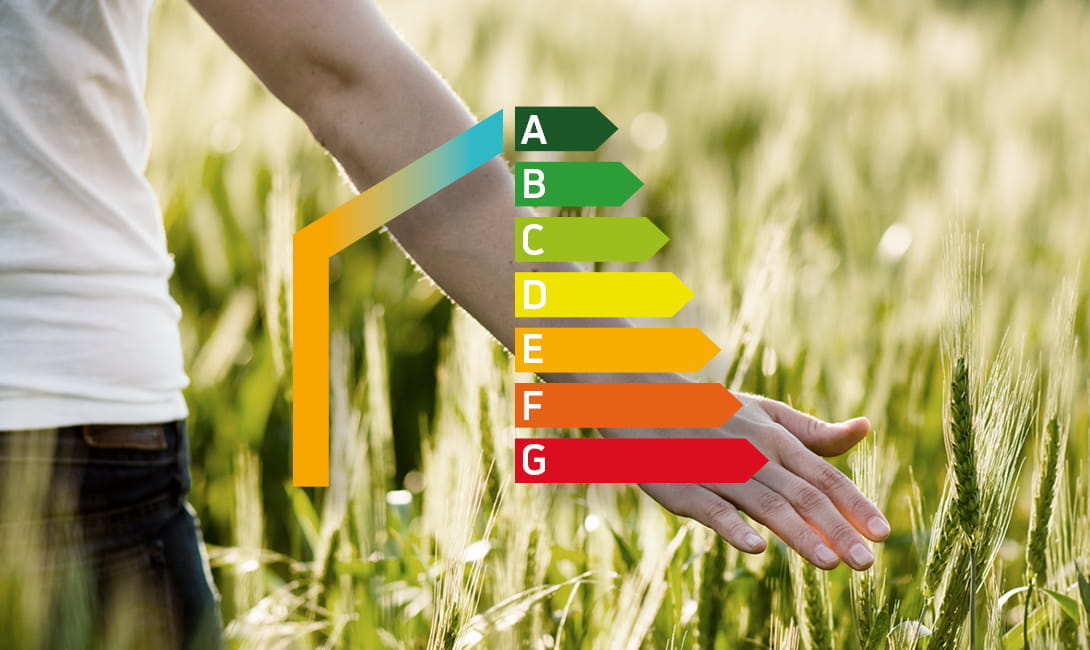- Better integration
- Our solutions
- Energy saving
- Insights
The role of HVAC systems in the revised Energy Performance of Buildings Directive
Energy Performance of Buildings Directive
The first version of the Energy Performance of Buildings Directive (EPBD) was published in 2002(2). It was recast in 2010(3) and a revised version was published in 2018(4). In December 2021 the European Commission proposed another revision to reflect Europe’s latest ambitions to reach EU Green Deal targets. This was approved by the European Parliament in March 2023 and has now, 1 year later, been formally adopted by the Members of the European Parliament. Their main goal: to help reduce energy consumption and greenhouse-gas emissions from the building sector.
Some key updates compared to the previous directive are:
- As of 2028 zero-emission buildings (ZEB) will become the standard for new buildings, as opposed to the current norm of nearly-zero energy buildings (NZEB).
- Minimum energy performance standards will be introduced, starting with the worst performing buildings. Residential buildings would need to reach EPC class E by 2030, and class D by 2033. Non-residential and public buildings would have to achieve the same classes by 2027 and 2030 respectively.
- Building renovation passports will be introduced, giving a step-by-step roadmap for buildings to reach net zero carbon by 2050.
- National governments will have to establish a long-term renovation strategy to decarbonise their national building stock by 2050.
- Energy performance certificates (EPCs) will have a different validity. EPCs of class C and above will be valid for 10 years. Lower class EPCs (D-G) will be issued for only 5 years.
Decarbonising the building stock
The application of the EPBD becomes more concrete now that Members of the European Parliament have adopted plans to decarbonise the building sector. The next step is to have the directive formally endorsed by the Council of Ministers in order to become law.
Member states now have to outline how they will adopt measures to decarbonise buildings and heating systems in particular, with a view to phasing out fossil fuels in heating and cooling by 2040. This requires a reduced energy demand of the buildings, but also reduced energy consumption by the occupants. For the remaining energy demand renewable sources will have to be used and, if possible, generated on-site.
Moreover, the aim is to have more worst-performing buildings renovated. According to the revised directive, the 16% worst-performing non-residential buildings will have to be renovated by 2030, and, by 2033, the worst-performing 26% through minimum energy performance requirements. For residential buildings member states will have to set their own national trajectories to reduce the average primary energy consumption of these buildings by at least 16% by 2030 and 20 to 22% by 2035.
Read more about heating and cooling solutions in renovation projects
The role of HVAC solutions
Since heating, cooling and domestic hot water account for up to 80 % of the energy used in EU households(5), the right HVAC solutions are of vital importance to save energy and achieve a zero-emission and fully decarbonised building stock by 2050. The revised Renewable Energy Directive (EU/2023/2413)(6) provides a framework for this and strengthens the development of renewables in heating and cooling.
According to Eurostat(7) the EU average share of energy from renewables in heating and cooling stood at 24.8% in 2022. This number needs to increase significantly in order to reach our energy and climate targets cost-effectively. Building up the use of renewable heat sources such as heat pumps is therefore key. However, these low temperature heat sources work best in energy-efficient, well-insulated buildings and must be considered as part of the complete energy system for optimum results. Only when generators, emitters and control technology are optimally matched can modern heating technology develop its maximum potential.
Read more about how low temperature heating can help save up to 30% energy
Tailor-made solutions
It is clear that to reach the goals set out in the revised Energy Performance of Buildings Directive, the right HVAC products suitable for and adapted to the building at hand are needed. Only then is it possible to achieve an efficient, durable and ecologically responsible result.That is why at Purmo we offer such a complete assortment of indoor climate comfort solutions. Ranging from modern panel radiators, electric radiators, convectors and radiant heating and cooling systems to radiator valves and user-friendly controls, every item contributes to a better result when it’s tailored to the building it’s installed in, its size and location.
Fully integrated and reliable systems form the basis for respecting the environment and saving energy. That is why, as a leader in sustainable indoor climate comfort solutions, we always ask ourselves these 4 questions when it comes to product innovation and development:
1. How can we improve the product’s and the system’s efficiency?
2. How can we ensure it integrates easily into an innovative system that performs optimally?
3. How can it help our customers work smarter?
4. How can we ensure it reduces our carbon footprint?
This is how at Purmo we bring indoor climate solutions to life for the benefit of our customers, end-users and our planet. If you want to know more about the way our solutions are designed or how they can help to minimise the impact of your project(s), don’t hesitate to contact us.
Discover our complete range of sustainable indoor climate comfort solutions
Sources:
1. https://eur-lex.europa.eu/legal-content/EN/ALL/;ELX_SESSIONID=FZMjThLLzfxmmMCQGp2Y1s2d3TjwtD8QS3pqdkhXZbwqGwlgY9KN!2064651424?uri=CELEX:32010L0031
2. https://eur-lex.europa.eu/LexUriServ/LexUriServ.do?uri=OJ:L:2003:001:0065:0071:EN:PDF
3. https://eur-lex.europa.eu/LexUriServ/LexUriServ.do?uri=OJ:L:2010:153:0013:0035:EN:PDF
4. https://eur-lex.europa.eu/legal-content/EN/TXT/?uri=uriserv:OJ.L_.2018.156.01.0075.01.ENG
5. https://energy.ec.europa.eu/topics/energy-efficiency/energy-efficient-buildings/energy-performance-buildings-directive_en
6. https://eur-lex.europa.eu/eli/dir/2023/2413/oj
7. https://ec.europa.eu/eurostat/en/web/products-eurostat-news/w/ddn-20240227-2

